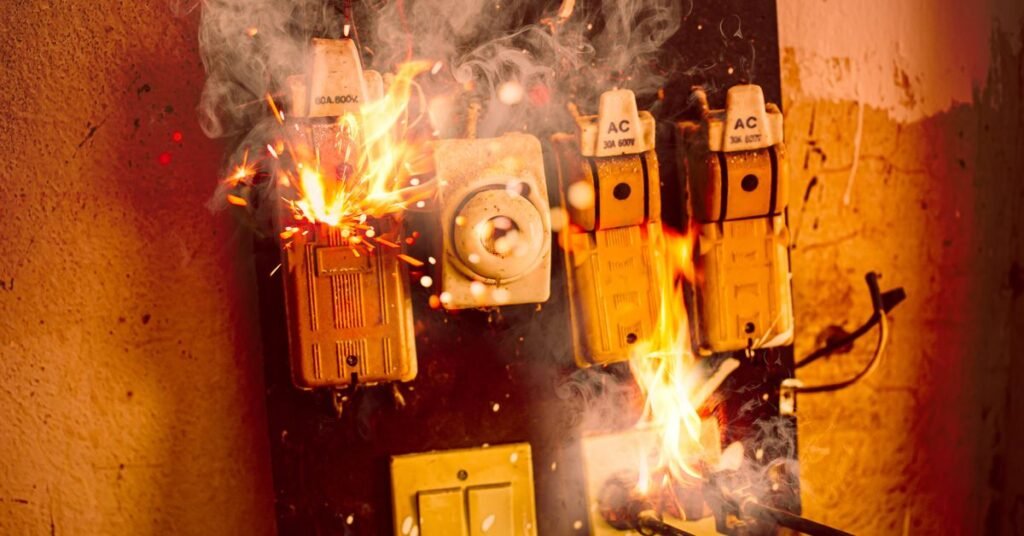
Decentralized
finance
(DeFi)
has
grown
significantly
and
has
become
an
integral
part
of
the
global
crypto
markets.
However,
its
continued
growth
heavily
depends
on
how
secure
the
technology
is
against
attacks.
According
to
data
from
DefiLlama,
over
$5
billion
in
the
total
value
of
assets
has
been
lost
in
DeFi
protocols
to
date.
To
remedy
this
situation,
the
Ethereum
community
has
come
up
with
a
new
token
standard
called
ERC-7265.
This
is
partner
content
sourced
from Laura
Shin’s
Unchained and
published
by
CoinDesk.
In
this
guide,
we
will
explain
the
ERC-7265
token
standard
and
the
role
it
plays
in
DeFi
risk
mitigation.
Understanding
the
ERC-7265
Token
Standard
The
ERC-7265
proposes
adding
a
“circuit
breaker”
mechanism
to
DeFi
protocols
to
stop
the
transfer
of
tokens
in
the
event
of
a
hack.
Re-entrancy
attacks,
logic
errors,
and
manipulation
of
oracles
can
cause
these
hacks.
The
circuit
breaker
would
operate
on
a
smart
contract
interface
and
be
independent
of
the
underlying
protocol
structure.
The
circuit
breaker
primarily
acts
as
a
conduit
for
token
transfers
and
will
simply
pause
token
transfers
on
a
protocol
when
a
predetermined
threshold
for
a
specific
metric
is
surpassed.
The
transfer
of
tokens
will
halt
until
the
protocol
issue
is
solved.
The
circuit
ERC-7265
standard
will
work
to
prevent
losses
from
malicious
protocol
attacks.
For
developers
working
on
ERC-compliant
protocols,
the
ERC-7265
offers
the
flexibility
to
customize
the
circuit-breaking
mechanism
to
a
protocol’s
specific
needs.
The
circuit
breaker
is
customizable
in
one
of
two
ways. It
can
delay
settlements
and
temporarily
hold
custody
of
assets
during
the
post-protocol
breach
phase.
Additionally,
it
could
reverse
any
attempted
outflows.
The
two
approaches
give
developers
full
autonomy
while
boosting
protocol
stability.
DeFi
protocols
can
incorporate
ERC-7265
to
improve
security
and
reduce
potential
losses.
The
Role
of
the
ERC-7265
in
DeFi
Risk
Mitigation
The
ERC-7265
standard,
if
widely
adopted,
can
help
to
prevent
DeFi
risks
in
the
following
ways:
Increases
security
Adding
a
circuit
breaker
mechanism
can
prevent
significant
losses
when
unusual
market
situations
occur
or
when
specific
metrics
are
surpassed
which
may
indicate
malicious
activity.
The
circuit
breaker
pauses
token
outflows,
and
this
serves
to
protect
customer
assets.
Improves
protocol
stability
During
unpredictable
market
conditions,
the
circuit
breaker
can
halt
token
transfer
to
reduce
the
possibility
of
catastrophic
losses.
Protocol
users
can
be
more
proactive
in
resolving
any
issues
while
token
outflows
remain
halted.
Including
the
ERC-7265
standard
can
help
boost
people’s
confidence
and
trust
in
a
DeFi
protocol.
Reduces
Risk
The
ERC-7265
standard
adds
an
extra
layer
of
security
to
Ethereum
protocols,
as
developers
can
choose
to
either
delay
a
settlement
or
revert
any
token
transfers.
With
such
a
safeguard
in
place,
a
DeFi
protocol
can
reduce
its
risk
profile
and
boost
investor
confidence.
Protect
Users
In
the
case
of
extreme
market
volatility
or
smart
contract
vulnerabilities,
the
circuit
breaker
can
help
to
prevent
serious
losses
and
protect
users’
assets.
Developer
customization
Developers
can
adopt
any
of
the
two
ERC-7265
implementations
depending
on
a
protocol’s
unique
requirements,
like
the
tokenomics
and
use
cases.
The
two
approaches
include
postponing
settlement
and
holding
custody
of
assets
or
reverting
attempted
token
transfers.
Benefits
and
Drawbacks
of
ERC-7265
The
ERC-7265
standard
offers
several
benefits
and
concerns.
They
include:
Benefits
-
Easily
customizable
–
Developers
who
adopt
the
ERC-7265
standard
can
customize
the
thresholds
depending
on
the
requirements
of
each
protocol.
Flexibility
is
crucial
for
protocols
with
collective
user
governance
that
need
community
buy-in
to
implement
the
safety
feature. -
Reduced
losses
–
DeFi
protocols
will
experience
fewer
economic
losses
caused
by
market
upheavals
or
code
vulnerabilities. -
Drive
adoption
–
The
incorporation
of
ERC-7265
can
help
rebuild
user
trust
in
DeFi
protocols
and
ultimately
drive
the
adoption
of
DeFi
technology. -
Prevents
attacks
–
The
ERC-7265
standard
prevents
future
attacks
by
removing
the
financial
incentive
for
attacks
to
occur
in
the
first
place. -
Interoperability
–
Adding
a
circuit
breaker
mechanism
to
various
DeFi
protocols
can
increase
interoperability
and
allow
users
to
transfer
assets
across
different
ecosystems.
Drawbacks
-
Protocol
integrity
–
Developers
must
apply
the
ERC-7265
standard
correctly
to
DeFi
protocols
to
avoid
any
negative
impact
on
network
integrity. -
Network
shutdown
–
If
events
are
mistaken
and
the
threshold
is
triggered,
the
circuit
breaker
will
engage,
causing
the
entire
network
to
halt.
This
scenario
can
be
destabilizing
to
an
entire
community.
The
Bottom
Line
The
ERC-7265
standard
can
potentially
be
an
effective
tool
in
lowering
risks
and
securing
the
DeFi
ecosystem.
However,
its
adoption
heavily
relies
on
its
acceptance
by
the
Ethereum
community
and
the
commitment
of
its
developers
to
incorporate
the
standard
into
the
network
infrastructure.
That
said,
should
it
meet
the
approval
of
stakeholders,
it
will
open
doors
for
DeFi
protocols
to
become
more
secure
and
resilient.